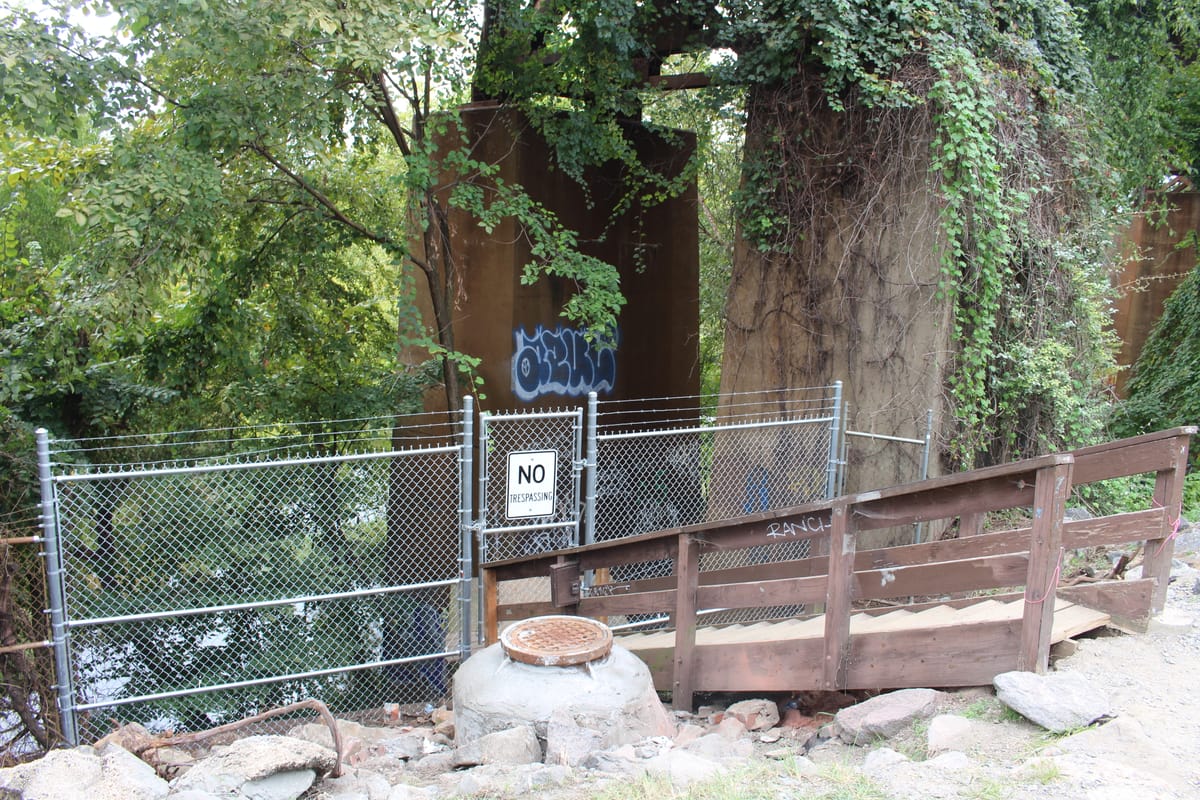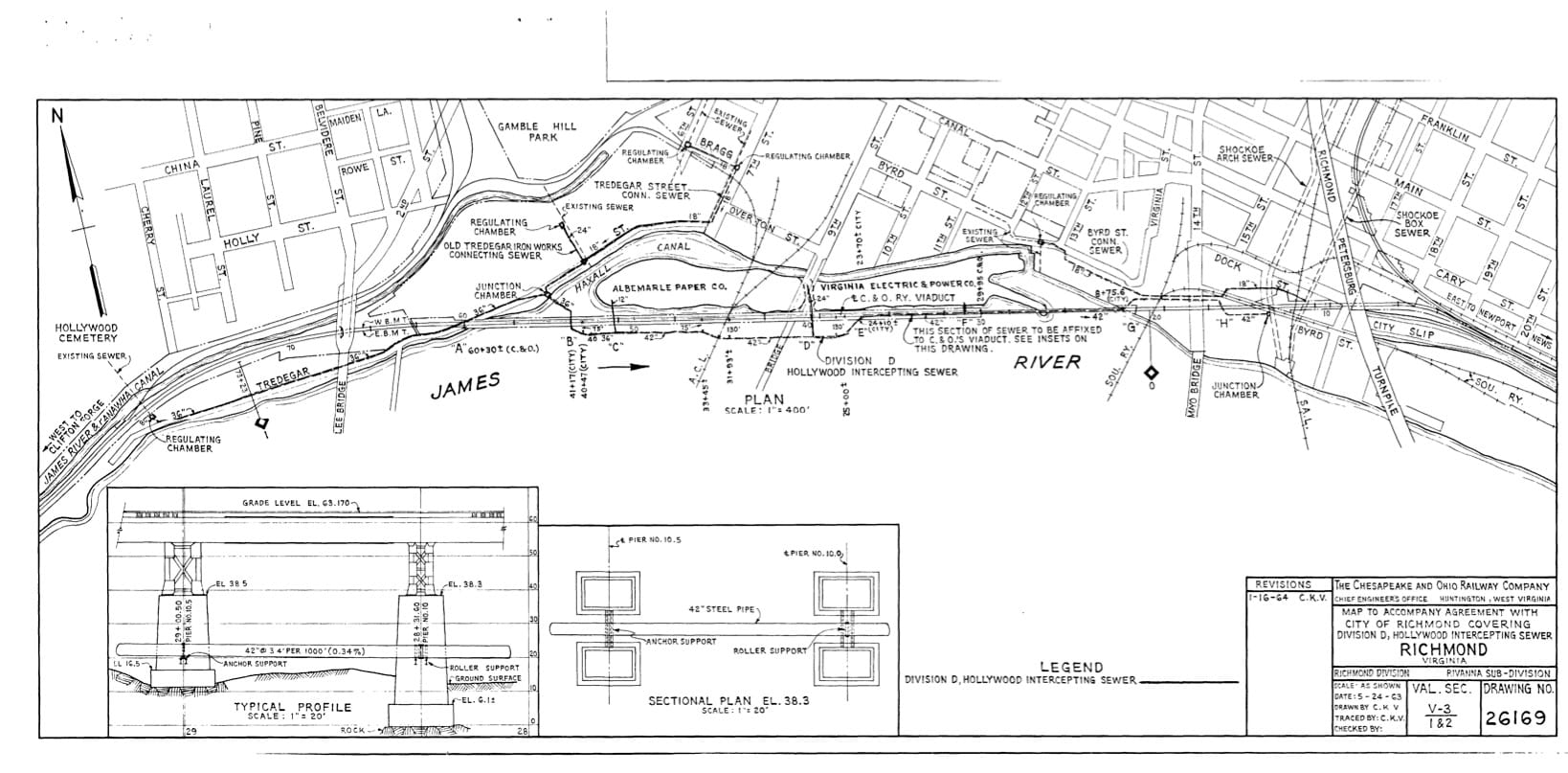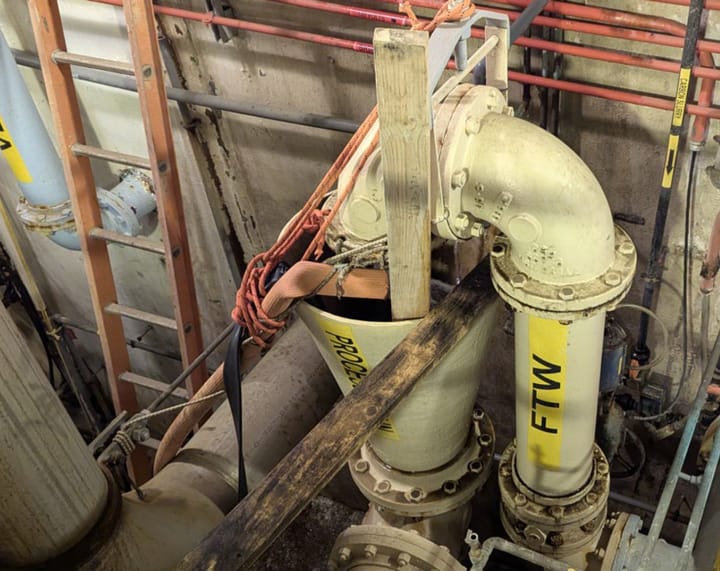CSX: City must make safety fixes, accept liability to keep Pipeline Trail open

CSX railway has told the city of Richmond that in order to consider further recreational use of the Pipeline Trail, the city must make safety upgrades and accept all liability for its use.
In a Sept. 19 letter to Richmond’s Department of Public Utilities and Department of Parks and Recreation, CSX Director of State Relations for Virginia Randy Marcus wrote that the railway’s initial agreement with the city for the walkway “was for installation and maintenance of the pipeline and did not authorize recreational or other access or use of our property.”
“To evaluate whether to authorize any trail or recreational use of our property, CSX at a minimum requires the public agency to indemnify CSX and accept all liability in addition to meeting all design and safety standards,” Marcus continued.
The letter, which was obtained by The Richmonder through the Virginia Freedom of Information Act, sheds light onto the closure of one of the city’s most popular and iconic riverfront trails.
A July sewage leak led the city to temporarily close the walkway this August for repairs. But rumors began circulating Sept. 13 that the closure would be permanent after the installation of a new chain-link gate at the entrance to the catwalk, which is accessed by a short ladder. Public outcry was immediate; one petition calling for the trail’s reopening has racked up over 2,200 signatures.
The Richmond Department of Public Utilities subsequently issued a press release stating the recent repairs had “highlighted ongoing safety concerns.”
“The portion of the trail that is the abandoned pipe will remain closed to the public to ensure the safety of all,” the department wrote.
CSX told The Richmonder on Sept. 13 that “CSX has not closed access to the pipeline trail. We are currently engaged in ongoing discussions with the city on the future of the trail.”
Ongoing conversations
The CSX letter as well as emails obtained through the Freedom of Information Act show conversations between city and railway officials have been underway since mid-August.
“I know it’s been a long while since we last spoke about safety concerns along the Pipeline trail, and since then, Department of Public Utilities has found that a major repair is needed that has lead to internal discussions about Pipeline that we’d like to share with you,” wrote Parks and Recreation Deputy Director for Capital Projects Nissa Richardson in an Aug. 15 email asking Marcus and CSX project manager Michael Liebelt for a meeting.
Marcus responded: “Thanks for reaching out. We’ve had additional internal discussions as well and I was planning to reach out to schedule a conversation as well. We are aware of the leak, river impacts and ongoing repairs that caused shutting down access.”
The emails show a meeting took place Aug. 23 that Department of Public Utilities Director April Bingham called “informative and collaborative.” She suggested involving the department’s attorney “as we prepare for next steps (i.e. building the case and exploring all options).”
Austin Staton, a spokesperson for CSX, said Thursday that conversations between the company and the city are still ongoing, with the next one expected to occur in the second half of October.
“Talks have been productive, and we’re encouraged by that,” he said.

Easement
While the Pipeline Trail has widely been perceived as a publicly owned part of the James River Park System, it is not.
A 1964 agreement between the city and the Chesapeake and Ohio Railway Company — a forerunner of CSX — allowed the city “the right and easement” to build a sewer line under the company’s elevated railway line along the James. It also specified that after construction of the line, “the City shall, at its sole cost and expense, maintain, keep in good repair, and renew when necessary the Sewer and all appurtenances thereto.”
“There is not a recreational easement,” said Rhonda Johnson, a spokesperson for the Department of Public Utilities, in an email this September.
Staton said CSX had not been aware that the pipeline was being used for recreational purposes until two years ago, and that access to the walkway has been “unauthorized.”
The company’s Sept. 19 letter states that “CSX does not allow recreational use of our operating property throughout our network,” noting the dangers of railway activities.
“The best way to keep the public safe from active railroad operations is for the public to not be on railroad property, unless authorized and protected,” Marcus wrote in the letter.
CSX identified several safety concerns related to the Pipeline Trail, including potential falling debris from the overhead railway line, the “fire-escape style ladder” used to access the eastern end of the trail, a walkway width that is only one person wide and the lack of a walkway on the western end of the trail that causes users to walk directly on the pipe.
“CSX believes these issues are largely an outcome of a walkway designed for maintenance access, not public recreational trail use,” the company wrote.
The Richmonder sent questions about the letter and ongoing talks between the city and CSX to the Department of Public Utilities and the Department of Parks and Recreation Thursday morning but did not receive a response as of publication.
Staton, the CSX spokesperson, said the company is talking with design experts on what could be done to make the walkway safer.
“There’s not anything like this in our network in terms of a trail, so this would definitely be something that is unique within our corridor,” he said. “At a minimum, we would need to have a canopy above just to ensure the safety of the public.”
A canopy arrangement is currently being used along the Capital Trail Low Line adjacent to Dock Street. That trail also runs beneath CSX’s elevated track and is what Marcus’ letter calls a “rare” exception to the railway’s prohibition on recreational use.
Asked about user injuries that have been reported on the Pipeline Trail, Staton said CSX isn’t aware of any but also “didn’t know there was unauthorized access until two years ago.”
“Just because incidents haven’t happened, we don’t want them to happen,” he said.






